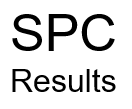Identity Taxonomy
Structured comparable identities are the key to MRO material master quality and business success. To achieve this, we need to apply a standard. It would be great if we could refer to a recognized international or industry standard and apply it. I don’t believe one exists. I have not found one. There are many standards available. None have a purpose of enabling catalogue rationalization to one MRO record for each real-world MRO item needed, and that is our requirement.
We see the MRO identity problem most clearly when we look at it from the perspective of a Maintenance Planner. Their task is not helped by Supplier catalogue at source methods because they can still have multiple records per real-world item. More importantly catalogue at source methods do not provide a workable solution for the often 100s of thousands of legacy MRO records that are currently causing confusion in MRO processes.
Applying a spend classification taxonomy does not solve our problem. These methods assign items into buckets of similar items. They are grouping solutions, not identity solutions. Still far short of structured comparable item identities.
A common data cleanse method is applying item descriptions from a reference library of MRO items. This method provides structure to descriptions, but care needs to be taken that the nouns used to key to the reference records are mutually exclusive. Without sufficient effort to map noun synonyms, multiple versions of one item still appear as unique items.
For the above reasons, it is recommended to set up an enterprise MRO identity taxonomy.
A taxonomy consists of a set of noun class templates that covers the universe of your MRO needs. Each template contains the attributes to identify the item including attributes that will be used as the description components and required key specifications. Noun classes appropriate for MPN use include fields for Manufacturer and MPN. Noun class templates for non-MPN noun classes makes it explicit that MPNs are not expected.
SPC Results can accelerate the Item Identity Taxonomy creation with existing templates. Resolving noun class synonyms, description attributes and order, which key specs to include, and approving a common set of abbreviations is part of the solution.
Apply the Taxonomy to MRO Items
This is the start of heavy lifting for the transformation effort. The MRO catalogue items are classified into the approved MRO Item Identity Taxonomy. Each MRO record is assigned into a noun class and all template fields with available field values are populated.
This portion of the effort can be executed in your Master Data Management (MDM) System that has had the Identity Taxonomy loaded, or alternatively an outsource data cleansing contractor can do the work.
Enrich the Items
Since the existing records were not likely populated with an Identity Standard, it should be expected there are missing field values in many records. This is a topic that Data Cleansing Outsourcers excel at. They have specialized skills for doing enrichment efficiently.
Rationalize the Items
This is the comparison phase of the transformation. Often MRO item comparisons consists of doing matches using the MPN field. This simple method allows all records with a blank MPN value, an incorrectly entered MPN, MPNs superseded by the OEM (allowing multiple records for the same item all looking unique), and the unknown challenge of OEM MPNS, OPM MPNs, and various Supplier part numbers being populated in legacy records.
By doing a more rigorous all attribute comparison of all items in each identity class, we flag for further examination items with the same attributes except for MPN values.
After identifying and researching possible duplicates and identifying indeterminate items (items that the classifying and enrichment processes did not yield a clear identity, we can determine the appropriate records to consolidate. This will involve choosing which material number to keep in the system, and which to flag for deletion. Choices will depend on stocks, locations, contracts, purchasing records, maintenance Bills of Material.
Update the System Records and Transform the MRO Catalogue
The final step after planning the data consolidation efforts is to update the system records. Typically, this will involve loading material identity class records, running description generation programs to automate the generation of short and long descriptions, doing the associated master data records amendments (contracts, purchasing records, POs, PReqs, stocks, and maintenance BoMs).
Change communication needs to be planned and offered to users using multiple available channels. Training materials should show End Users how search improvements will assist their work.
Also, the good work of the transformation needs to be sustained. The identity taxonomy used to rationalize the existing catalogue needs to be incorporated into the new MRO material master request process so that a rigorous duplicate check confirms if the new request is a valid new item. The Item Identity Taxonomy needs to be added to standing plans for adding merger MRO catalogues and new capital project MRO items.
